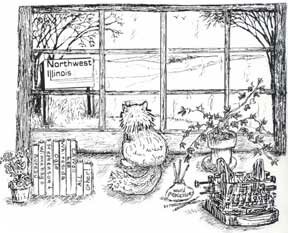
Discover rewarding casino experiences. 
|
When in the 1920’s-’30’s state and federal highway departments were building roads. There were arguments concerning the path the cement roads should take, around the town’s edge or through. Some went through the business districts so drivers would stop and shop but eventually this changed also because there could be too many stop signs or t-intersections that slowed down the traveler. Highways then went around town edges. That became a “roadblock” for the small town merchant. The automobile could travel farther, faster so shopping could be done elsewhere. Competition eventually came from the big box store at Elsewhere, as well as serve as a social event for the family. What does the small town merchant need? Entertainment? That all came to mind when deciding to do an article featuring two small villages in northern Stephenson County, Oneco and Orangeville. They experienced all the above—trails, roads, streets become highway, roads moved for efficiency-sake, by-pass altogether. In Oneco Township, that borders the Wisconsin state line, are many small crossroads settlements other than Oneco and Orangeville. They might have originated from a creamery or cheese factory located there, a school, church cemetery or both/all. Surprisingly, Oneco was once a major stop on two important roads.
Morgan VanMatre explored through the township—as early as 1828 and a few years later coaxed his brothers out here from Ohio, that in the middle 1830’s. Several families came during that time also, among them Alonzo Denio who had a town platted in 1839 which he named Oneco, a name derived from a Mohican Indian back in Connecticut. Groups came from New England, New York, others from Pennsylvania, then Germany and Switzerland, each giving their neighborhood a certain distinction. Those Swiss and German, naturally, built cheese factories and creameries for which the area became well-known. Certainly the steep hills reminded them of the mountainous parts of their homelands in Europe. However what was it that inspired Denio to plat a town at such a hilly site? Certainly it was the roads intersecting at the hill and curve, not an easy building site or for the stage horses to climb going up! A rest there before climbing? But that east-west trail was a major one between Chicago and Prairie du Chien and the north-south traditionally used as straight line between Freeport and Monroe, Madison.
By the 1840’s there were thought to be thirty families residing there with the key tradesmen and stores necessary to carry on everyday life ... three general stores, two blacksmiths, cooper, tailor, potter, carpenter, shoemaker and a physician ... A well balanced combination, plus a hotel for travelers. A school of the one-room variety was erected in 1843, followed by those of the frame, traditional at the time or need. The building seen at the corner across the former Rt. 26, a “local advisor” tells us, was school, church, funeral home and now a residence. It is haunted, according to him. He was quite knowledgeable about the area! The small house with the neon “open” sign is the only immediate notice of commerce. There were three active denominations in the course of Oneco’s history; Methodist, Baptist and United Brethren. The UB’s organized here as early as 1844 and then later bought the Methodist church. Schools in the surrounding area carried on neighborhood culture and names particular to the families there. Some still spoke German when they came to school and the “Yankees” called it “Hog Latin.” There was Clarno, Basswood, Eldorado, Pleasant Hill, Winslow, Franklin or the “Pancake” school. Eldorado was first called the Block school or “corncob college.” Many of those same names also labeled the cheese factories/creameries where developed “close knit” communities, each with their own traditions. Some of those “factories” operated into the mid-1960’s. The Oneco area was well-populated with Indian camps long after the Black Hawk War and the exodus of the native American to the west of the Mississippi in the late 1830’s. Conjecture had it that it was partially because of the “syrup trees” in the groves in the township. “Sugaring” was an important annual tradition there as it was down in Ogle and Lee counties especially near present day Shabbona where large gatherings of Indians met to tap and boil sap for syrup. The white man took up the tradition following the departure of the Indian camps. Another “sweet treat” must have been prominent at Oneco because the little stream passing through it is named “Honey Creek.” It gurgled under the corner of one of the stores, Thomas Moore, the proprietor, who kept beverages cold by plunging them into the stream. Honey Creek was a tributary of Richland Creek, the main creek in the township. It has often flooded prodigiously. Pictures show its perversity because unlike most streams here that run east-west, it runs north and south. It also provided the water power for two mills along its banks and with only a few miles between them. Oneco claimed one as its mill, although it was a mile from the village site. It was operating in the early 1840’s by C.W. Brown It was later rebuilt by John LaBorde who was its miller for thirty years. It closed in the 1890’s. It did operate for about fifty years, but the one at Orangeville downstream much longer. Was it because Oneco’s was not at the town site but a mile away? Or merely that corporate roller mills had taken over the flour/grain grinding business to a more efficient degree? Several sources state that the two villages, Oneco and Orangeville were bitter rivals in every way. This, surely, would have included the mills. O’ville’s persisted into the twentieth century. And did the residents gloat about the fact, or were they too busy in their bustling little town to give it attention? A sociologist, or somebody “scientific,” might tell you why Oneco lagged and Orangeville had several growth spurts! The two villages were linked in the twentieth century by Rt. 26, present day. We take a guess to say that at first the highway went up Orangeville’s main street, north, south, meeting a t-intersection at High Street, the street on which the commercial district is located. By turning right that road between Freeport and Monroe, it traveled east to meet “Church Alley,” then turned left where a few blocks beyond was the town’s cemetery. The first cemetery had been inside the town plat but was moved for more space with a donation by John Bower, an early settler and entrepreneur. As time passed and modernizing of roads took place, the main road made a Y at the south edge of town, veering to the right meeting Church Alley at High Street as it was until recent times when a wide by-pass was constructed, even more distancing the highway from the commercial district as they do in many areas. Orangeville serves as an example of the evolution of roads ... Trail, plat with main streets as highway, relocation of road, then by-pass. The first Rt. 26 still links Orangeville and Oneco where the by-pass may be reached at the end of its “main street.” Roads have history. No photo remains of Oneco’s mill, as far as is known, but photos and sketch of Orangeville’s do exist, an imposing structure of three stories tall, evolved from the primitive frontier sort. While the rivalry between the two “O” villages, the road between them figures in a legend that proves to be corrected by fact. How it began is not known. The “legend” went, according to reference, that both town’s vied for a post office and the way it was chosen was the residents from both villages lined up on either side of the road, Oneco on one side, Orangeville on the other, the latter winning by the “thinnest of margins.” Well, this is false because Oneco was awarded a post office in March of 1840, doubtless, because of the stage runs. Orangeville not until 1854, fourteen years later. This is stated in the 1970 County history and in an earlier one, 1854, written by William Johnston whose book came out just before Orangeville was designated postal delivery. Why so long between post offices? Oneco post office closed in 1903 while Orangeville’s remains. Of course, when all the rivalry and competition was going on, Orangeville wasn’t Orangeville until 1854, long after the first settlers arrived. What was it? Tune in next week for the name, and another important road that was built there. It may be because of that road that Orangeville remained “in business.”
|






